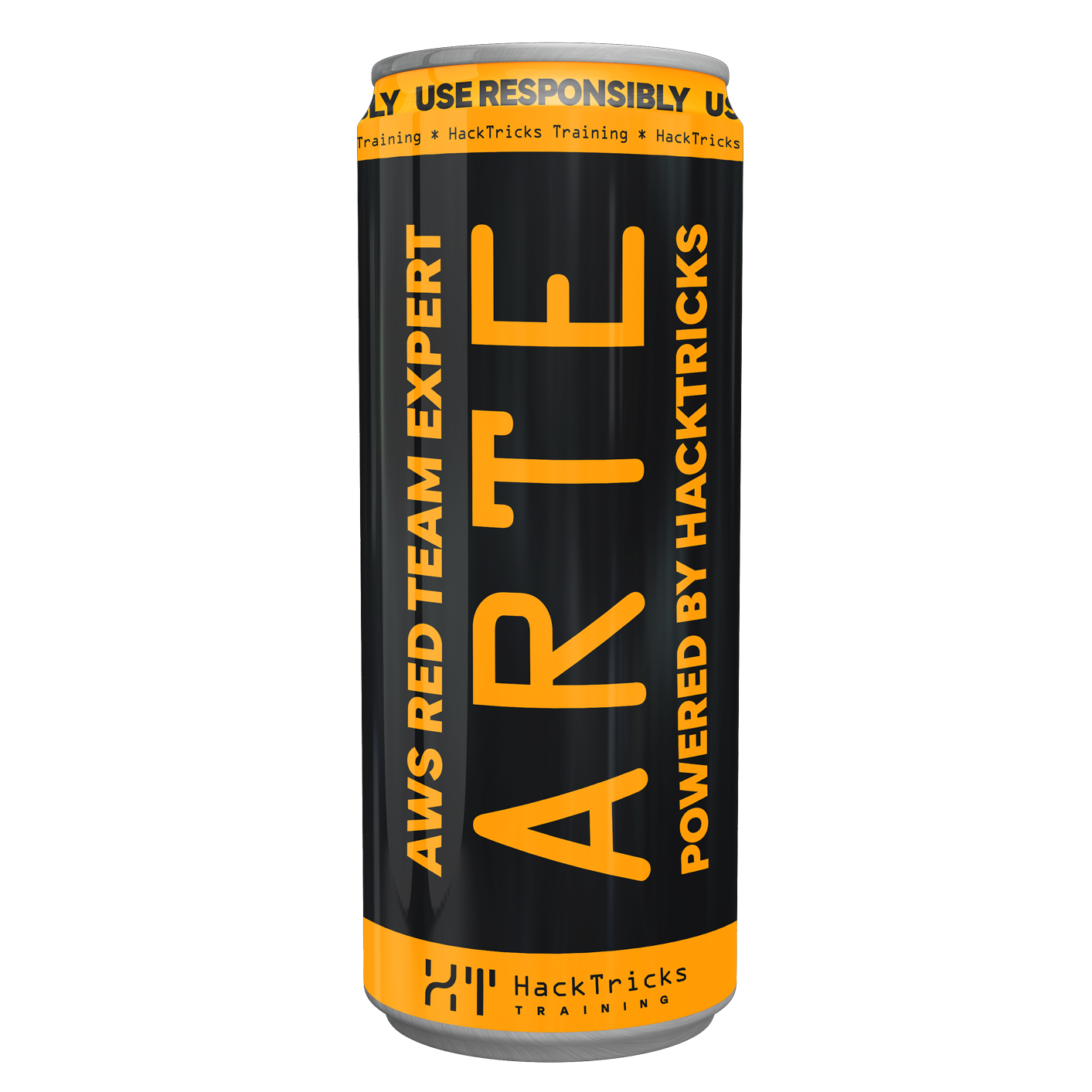19 KiB
Source code Review / SAST Tools
{% hint style="success" %}
Learn & practice AWS Hacking: HackTricks Training AWS Red Team Expert (ARTE)
HackTricks Training AWS Red Team Expert (ARTE)
Learn & practice GCP Hacking:  HackTricks Training GCP Red Team Expert (GRTE)
HackTricks Training GCP Red Team Expert (GRTE)
Support HackTricks
- Check the subscription plans!
- Join the 💬 Discord group or the telegram group or follow us on Twitter 🐦 @hacktricks_live.
- Share hacking tricks by submitting PRs to the HackTricks and HackTricks Cloud github repos.
Guidance and & Lists of tools
- https://owasp.org/www-community/Source_Code_Analysis_Tools
- https://github.com/analysis-tools-dev/static-analysis
Multi-Language Tools
Naxus - AI-Gents
There is a free package to review PRs.
Semgrep
It's an Open Source tool.
Supported Languages
| Category | Languages |
|---|---|
| GA | C# · Go · Java · JavaScript · JSX · JSON · PHP · Python · Ruby · Scala · Terraform · TypeScript · TSX |
| Beta | Kotlin · Rust |
| Experimental | Bash · C · C++ · Clojure · Dart · Dockerfile · Elixir · HTML · Julia · Jsonnet · Lisp · |
Quick Start
{% code overflow="wrap" %}
# Install https://github.com/returntocorp/semgrep#option-1-getting-started-from-the-cli
brew install semgrep
# Go to your repo code and scan
cd repo
semgrep scan --config auto
{% endcode %}
You can also use the semgrep VSCode Extension to get the findings inside VSCode.
SonarQube
There is an installable free version.
Quick Start
{% code overflow="wrap" %}
# Run the paltform in docker
docker run -d --name sonarqube -e SONAR_ES_BOOTSTRAP_CHECKS_DISABLE=true -p 9000:9000 sonarqube:latest
# Install cli tool
brew install sonar-scanner
# Go to localhost:9000 and login with admin:admin or admin:sonar
# Generate a local project and then a TOKEN for it
# Using the token and from the folder with the repo, scan it
cd path/to/repo
sonar-scanner \
-Dsonar.projectKey=<project-name> \
-Dsonar.sources=. \
-Dsonar.host.url=http://localhost:9000 \
-Dsonar.token=<sonar_project_token>
{% endcode %}
CodeQL
There is an installable free version but according to the license you can only use free codeQL version in Open Source projects.
Install
{% code overflow="wrap" %}
# Download your release from https://github.com/github/codeql-action/releases
## Example
wget https://github.com/github/codeql-action/releases/download/codeql-bundle-v2.14.3/codeql-bundle-osx64.tar.gz
# Move it to the destination folder
mkdir ~/codeql
mv codeql-bundle* ~/codeql
# Decompress it
cd ~/codeql
tar -xzvf codeql-bundle-*.tar.gz
rm codeql-bundle-*.tar.gz
# Add to path
echo 'export PATH="$PATH:/Users/username/codeql/codeql"' >> ~/.zshrc
# Check it's correctly installed
## Open a new terminal
codeql resolve qlpacks #Get paths to QL packs
{% endcode %}
Quick Start - Prepare the database
{% hint style="success" %} The first thing you need to do is to prepare the database (create the code tree) so later the queries are run over it. {% endhint %}
- You can allow codeql to automatically identify the language of the repo and create the database
{% code overflow="wrap" %}
codeql database create <database> --language <language>
# Example
codeql database create /path/repo/codeql_db --source-root /path/repo
## DB will be created in /path/repo/codeql_db
{% endcode %}
{% hint style="danger" %} This will usually trigger and error saying that more than one language was specified (or automatically detected). Check the next options to fix this! {% endhint %}
- You can do this manually indicating the repo and the language (list of languages)
{% code overflow="wrap" %}
codeql database create <database> --language <language> --source-root </path/to/repo>
# Example
codeql database create /path/repo/codeql_db --language javascript --source-root /path/repo
## DB will be created in /path/repo/codeql_db
{% endcode %}
- If your repo is using more than 1 language, you can also create 1 DB per language indicating each language.
{% code overflow="wrap" %}
export GITHUB_TOKEN=ghp_32849y23hij4...
codeql database create <database> --source-root /path/to/repo --db-cluster --language "javascript,python"
# Example
export GITHUB_TOKEN=ghp_32849y23hij4...
codeql database create /path/repo/codeql_db --source-root /path/to/repo --db-cluster --language "javascript,python"
## DBs will be created in /path/repo/codeql_db/*
{% endcode %}
- You can also allow
codeqlto identify all the languages for you and create a DB per language. You need to give it a GITHUB_TOKEN.
{% code overflow="wrap" %}
export GITHUB_TOKEN=ghp_32849y23hij4...
codeql database create <database> --db-cluster --source-root </path/to/repo>
# Example
export GITHUB_TOKEN=ghp_32849y23hij4...
codeql database create /tmp/codeql_db --db-cluster --source-root /path/repo
## DBs will be created in /path/repo/codeql_db/*
{% endcode %}
Quick Start - Analyze the code
{% hint style="success" %} Now it's finally time to analyze the code {% endhint %}
Remember that if you used several languages, a DB per language would have been crated in the path you specified.
{% code overflow="wrap" %}
# Default analysis
codeql database analyze <database> --format=<format> --output=</out/file/path>
# Example
codeql database analyze /tmp/codeql_db/javascript --format=sarif-latest --output=/tmp/graphql_results.sarif
# Specify QL pack to use in the analysis
codeql database analyze <database> \
<qls pack> --sarif-category=<language> \
--sarif-add-baseline-file-info \ --format=<format> \
--output=/out/file/path>
# Example
codeql database analyze /tmp/codeql_db \
javascript-security-extended --sarif-category=javascript \
--sarif-add-baseline-file-info --format=sarif-latest \
--output=/tmp/sec-extended.sarif
{% endcode %}
Quick Start - Scripted
{% code overflow="wrap" %}
export GITHUB_TOKEN=ghp_32849y23hij4...
export REPO_PATH=/path/to/repo
export OUTPUT_DIR_PATH="$REPO_PATH/codeql_results"
mkdir -p "$OUTPUT_DIR_PATH"
export FINAL_MSG="Results available in: "
echo "Creating DB"
codeql database create "$REPO_PATH/codeql_db" --db-cluster --source-root "$REPO_PATH"
for db in `ls "$REPO_PATH/codeql_db"`; do
echo "Analyzing $db"
codeql database analyze "$REPO_PATH/codeql_db/$db" --format=sarif-latest --output="${OUTPUT_DIR_PATH}/$db).sarif"
FINAL_MSG="$FINAL_MSG ${OUTPUT_DIR_PATH}/$db.sarif ,"
echo ""
done
echo $FINAL_MSG
{% endcode %}
You can visualize the findings in https://microsoft.github.io/sarif-web-component/ or using VSCode extension SARIF viewer.
You can also use the VSCode extension to get the findings inside VSCode. You will still need to create a database manually, but then you can select any files and click on Right Click -> CodeQL: Run Queries in Selected Files
Snyk
There is an installable free version.
Quick Start
# Install
sudo npm install -g snyk
# Authenticate (you can use a free account)
snyk auth
# Test for open source vulns & license issues
snyk test [--all-projects]
# Test for code vulnerabilities
## This will upload your code and you need to enable this option in: Settings > Snyk Code
snyk test code
# Test for vulns in images
snyk container test [image]
# Test for IaC vulns
snyk iac test
You can also use the snyk VSCode Extension to get findings inside VSCode.
Insider
It's Open Source, but looks unmaintained.
Supported Languages
Java (Maven and Android), Kotlin (Android), Swift (iOS), .NET Full Framework, C#, and Javascript (Node.js).
Quick Start
# Check the correct release for your environment
$ wget https://github.com/insidersec/insider/releases/download/2.1.0/insider_2.1.0_linux_x86_64.tar.gz
$ tar -xf insider_2.1.0_linux_x86_64.tar.gz
$ chmod +x insider
$ ./insider --tech javascript --target <projectfolder>
DeepSource
Free for public repos.
NodeJS
yarn
# Install
brew install yarn
# Run
cd /path/to/repo
yarn install
yarn audit # In lower versions
yarn npm audit # In 2+ versions
npm audit
pnpm
# Install
npm install -g pnpm
# Run
cd /path/to/repo
pnpm install
pnpm audit
- nodejsscan: Static security code scanner (SAST) for Node.js applications powered by libsast and semgrep.
# Install & run
docker run -it -p 9090:9090 opensecurity/nodejsscan:latest
# Got to localhost:9090
# Upload a zip file with the code
- RetireJS: The goal of Retire.js is to help you detect the use of JS-library versions with known vulnerabilities.
# Install
npm install -g retire
# Run
cd /path/to/repo
retire --colors
Electron
- electronegativity: It's a tool to identify misconfigurations and security anti-patterns in Electron-based applications.
Python
- Bandit: Bandit is a tool designed to find common security issues in Python code. To do this Bandit processes each file, builds an AST from it, and runs appropriate plugins against the AST nodes. Once Bandit has finished scanning all the files it generates a report.
# Install
pip3 install bandit
# Run
bandit -r <path to folder>
- safety: Safety checks Python dependencies for known security vulnerabilities and suggests the proper remediations for vulnerabilities detected. Safety can be run on developer machines, in CI/CD pipelines and on production systems.
# Install
pip install safety
# Run
safety check
Pyt: Unmaintained.
.NET
# dnSpy
https://github.com/0xd4d/dnSpy
# .NET compilation
C:\Windows\Microsoft.NET\Framework64\v4.0.30319\csc.exe test.cs
RUST
# Install
cargo install cargo-audit
# Run
cargo audit
#Update the Advisory Database
cargo audit fetch
Java
# JD-Gui
https://github.com/java-decompiler/jd-gui
# Java compilation step-by-step
javac -source 1.8 -target 1.8 test.java
mkdir META-INF
echo "Main-Class: test" > META-INF/MANIFEST.MF
jar cmvf META-INF/MANIFEST.MF test.jar test.class
| Task | Command |
|---|---|
| Execute Jar | java -jar [jar] |
| Unzip Jar | unzip -d [output directory] [jar] |
| Create Jar | jar -cmf META-INF/MANIFEST.MF [output jar] * |
| Base64 SHA256 | sha256sum [file] | cut -d' ' -f1 | xxd -r -p | base64 |
| Remove Signing | rm META-INF/.SF META-INF/.RSA META-INF/*.DSA |
| Delete from Jar | zip -d [jar] [file to remove] |
| Decompile class | procyon -o . [path to class] |
| Decompile Jar | procyon -jar [jar] -o [output directory] |
| Compile class | javac [path to .java file] |
Go
https://github.com/securego/gosec
PHP
Wordpress Plugins
https://www.pluginvulnerabilities.com/plugin-security-checker/
Solidity
JavaScript
Discovery
- Burp:
- Spider and discover content
- Sitemap > filter
- Sitemap > right-click domain > Engagement tools > Find scripts
- WaybackURLs:
waybackurls <domain> |grep -i "\.js" |sort -u
Static Analysis
Unminimize/Beautify/Prettify
- https://prettier.io/playground/
- https://beautifier.io/
- See some of the tools mentioned in 'Deobfuscate/Unpack' below as well.
Deobfuscate/Unpack
Note: It may not be possible to fully deobfuscate.
- Find and use .map files:
- If the .map files are exposed, they can be used to easily deobfuscate.
- Commonly, foo.js.map maps to foo.js. Manually look for them.
- Use JS Miner to look for them.
- Ensure active scan is conducted.
- Read 'Tips/Notes'
- If found, use Maximize to deobfuscate.
- Without .map files, try JSnice:
- References: http://jsnice.org/ & https://www.npmjs.com/package/jsnice
- Tips:
- If using jsnice.org, click on the options button next to the "Nicify JavaScript" button, and de-select "Infer types" to reduce cluttering the code with comments.
- Ensure you do not leave any empty lines before the script, as it may affect the deobfuscation process and give inaccurate results.
- For some more modern alternatives to JSNice, you might like to look at the following:
- https://github.com/pionxzh/wakaru
-
Javascript decompiler, unpacker and unminify toolkit Wakaru is the Javascript decompiler for modern frontend. It brings back the original code from a bundled and transpiled source.
-
- https://github.com/j4k0xb/webcrack
-
Deobfuscate obfuscator.io, unminify and unpack bundled javascript
-
- https://github.com/jehna/humanify
-
Un-minify Javascript code using ChatGPT This tool uses large language modeles (like ChatGPT & llama2) and other tools to un-minify Javascript code. Note that LLMs don't perform any structural changes – they only provide hints to rename variables and functions. The heavy lifting is done by Babel on AST level to ensure code stays 1-1 equivalent.
- https://thejunkland.com/blog/using-llms-to-reverse-javascript-minification.html
-
Using LLMs to reverse JavaScript variable name minification
-
-
- Use
console.log();- Find the return value at the end and change it to
console.log(<packerReturnVariable>);so the deobfuscated js is printed instead of being executing. - Then, paste the modified (and still obfuscated) js into https://jsconsole.com/ to see the deobfuscated js logged to the console.
- Finally, paste the deobfuscated output into https://prettier.io/playground/ to beautify it for analysis.
- Note: If you are still seeing packed (but different) js, it may be recursively packed. Repeat the process.
- Find the return value at the end and change it to
References
- YouTube: DAST - Javascript Dynamic Analysis
- https://blog.nvisium.com/angular-for-pentesters-part-1
- https://blog.nvisium.com/angular-for-pentesters-part-2
- devalias's GitHub Gists:
Tools
Less Used References
- https://cyberchef.org/
- https://olajs.com/javascript-prettifier
- https://jshint.com/
- https://github.com/jshint/jshint/
{% hint style="success" %}
Learn & practice AWS Hacking: HackTricks Training AWS Red Team Expert (ARTE)
HackTricks Training AWS Red Team Expert (ARTE)
Learn & practice GCP Hacking:  HackTricks Training GCP Red Team Expert (GRTE)
HackTricks Training GCP Red Team Expert (GRTE)
Support HackTricks
- Check the subscription plans!
- Join the 💬 Discord group or the telegram group or follow us on Twitter 🐦 @hacktricks_live.
- Share hacking tricks by submitting PRs to the HackTricks and HackTricks Cloud github repos.